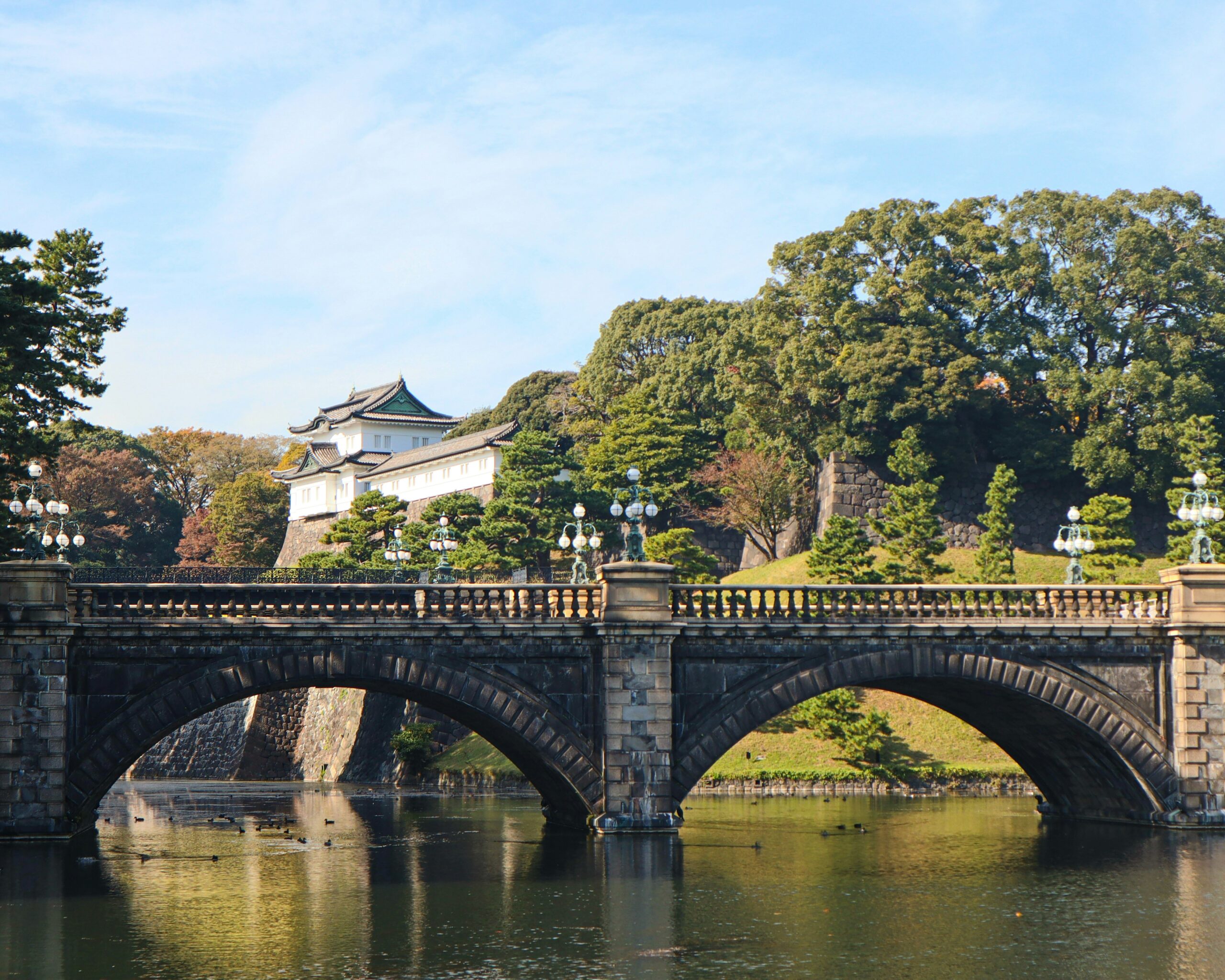I had begun to feel a quiet fatigue from life in Tokyo.
Daily meetings, presentations, conversations with my boss—I could go through the motions, but I didn’t feel like I was truly experiencing any of it.
Before I knew it, my weekends had dwindled into a cycle of cafés and my apartment.
Then one day, I came across an article in a travel magazine aimed at foreign residents in Japan. A photograph caught my eye: under a blue sky, a vast green space framed a quiet lake, with an arched bridge reflected gently in the water.
The caption read simply: “Imperial Palace.”
Though I had lived in Japan for a year, I had never visited the Imperial Palace. It had always felt distant, formal—almost untouchable.
But something about that photograph stirred something deep within me.
It made me long to touch a rhythm of time different from the city’s constant beat.
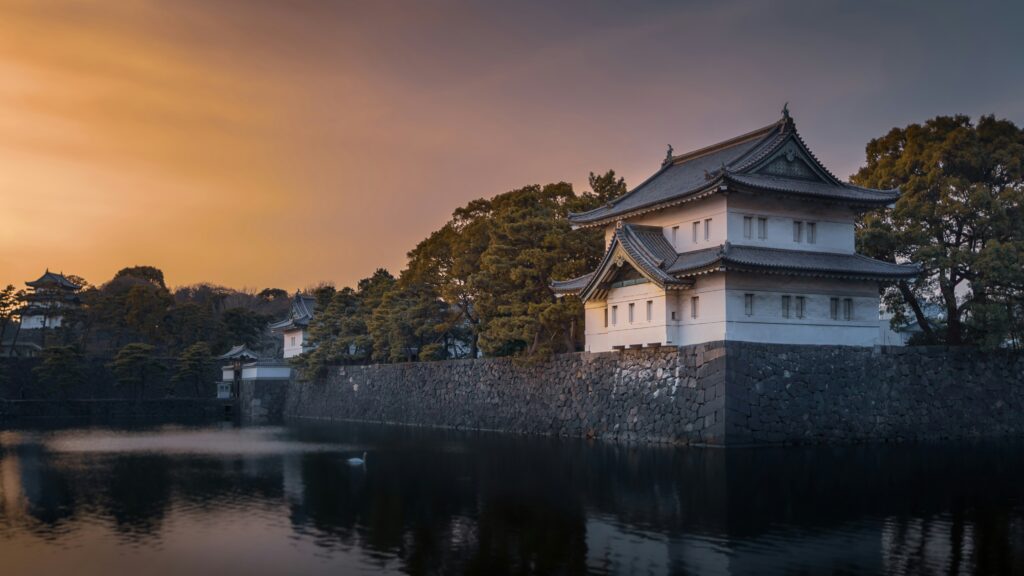
On a midsummer morning, I stepped out of Tokyo Station and began walking south along Hibiya-dori Avenue. The cries of cicadas echoed off the concrete, filling the city with the sound of summer.
As I approached the Outer Gardens of the Imperial Palace, the air began to change. The wind, which had drifted through the canyons of skyscrapers, now rustled gently through rows of pine trees.
My first stop was the Nijubashi Bridge. An elegant stone arch stretched over a deep moat. Behind it, layers of trees hid fragments of stone walls, whispering of another time.
A few tourists were snapping photos, but even so, the place held a strange, sacred stillness.
It felt like a space that had quietly watched over centuries of change in Japan.
It wasn’t just a landmark—it was as if time itself drifted through the air in soft, invisible layers.
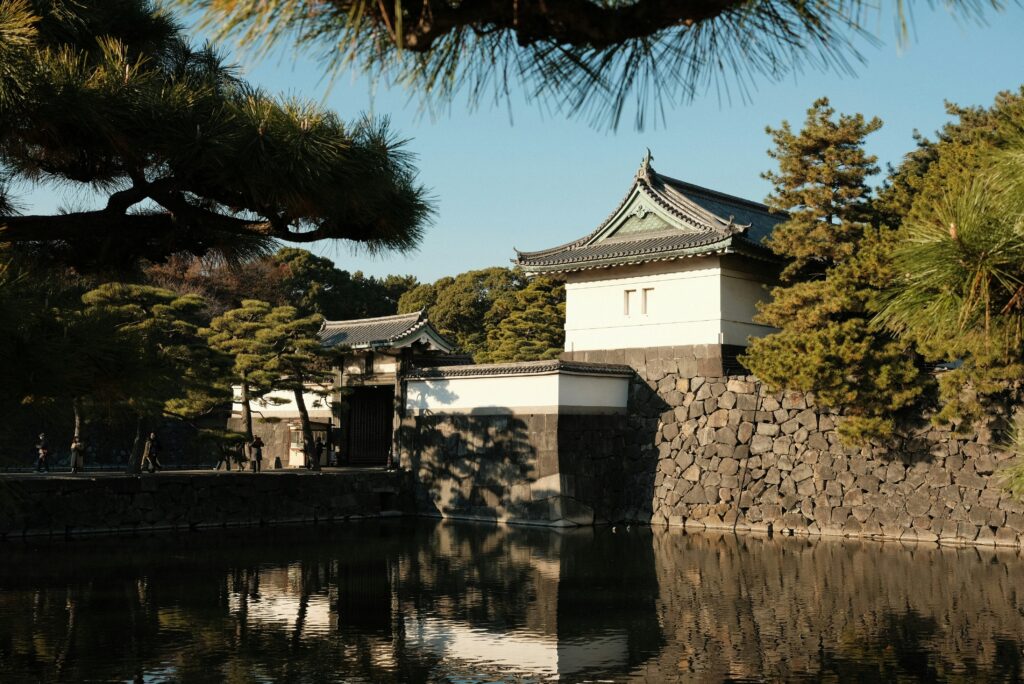
From the Edo era to today, the Imperial Palace has witnessed Tokyo’s transformation.
While skyscrapers rise and the city’s skyline constantly evolves, this place alone seems to cradle time—unchanged and quietly present.
And perhaps it always will.
As the sun climbed higher, I made my way to Kitanomaru Park, a broad stretch of greenery just north of the palace. Shaded and breezy even in the heat of summer, it offered a rare kind of peace. Families, couples, and individuals enjoying books dotted the landscape. As I sat on a bench sipping cold barley tea, I caught sight of runners circling the outer perimeter of the Imperial Palace.
The contrast between their steady pace and the serene scenery surrounding them reminded me of the complexity and beauty of Tokyo.
This place, once a stage for history, now hosts people as they run, breathe, and regain their balance.
It felt as if the past and present were holding hands, living together in quiet harmony.
Sitting on a bench sipping cold barley tea, I was approached by a man who had taken the seat beside me.
“Hot, isn’t it?” he said, smiling. “But this place doesn’t feel like the middle of Tokyo at all, does it?”
He wore a white shirt and beige chinos, with a smartwatch on his wrist and a backpack that seemed to carry a laptop.
His voice was calm, his eyes thoughtful.
“Are you sightseeing?” he asked.
“No,” I replied. “I live in Tokyo. I just felt like walking today.”
He nodded with a quiet smile.
“I’m kind of the same,” he said. “I work at an IT company in Otemachi. But after staring at a screen all day, I sometimes need to come here—to somewhere that reminds me where I actually stand.”
In his early thirties, he told me he visits this park from time to time to reset his thoughts.
“Places like this remind me that history isn’t in the past—it flows right into the present. Being here makes me reflect on my own ‘now.’”
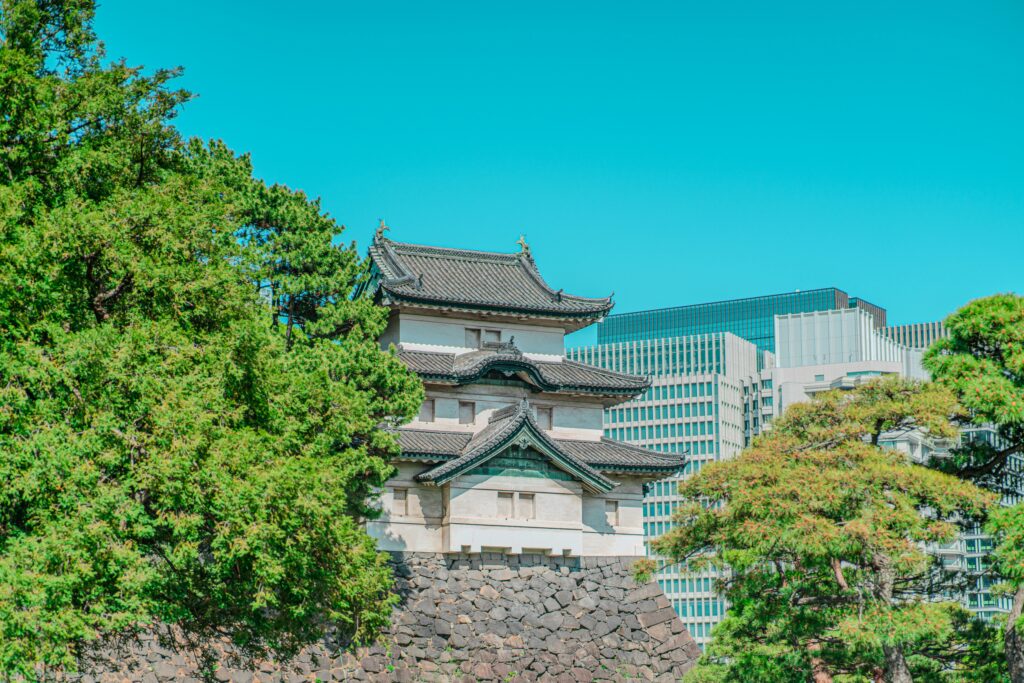
After we parted ways, I walked a little further and entered the East Gardens of the Imperial Palace.
Once part of Edo Castle, the gardens are open to the public and carefully preserved.
Sprawling lawns, iris ponds, moss-covered stone walls—it felt like time was gently flowing in reverse.
There were many foreign visitors, yet everyone seemed unhurried, their faces serene.
The scent of grass, the hum of insects, the crescendo of cicadas—they sharpened my senses, even awakening long-forgotten childhood memories.
For lunch, I wandered into a quiet alley in Otemachi and found a small Japanese restaurant.
Its wooden lattice door swung softly beneath a fluttering noren curtain.
Inside, the air was cool and still, scented with wood.
I ordered tempura soba.
The broth was rich, the shrimp and seasonal vegetables freshly fried.
The aroma of dashi rose with the steam, and with one bite, the savory broth and crisp batter filled my mouth with warmth and comfort.
To find such care and subtlety in a dish—right in the heart of Tokyo—took me by surprise.
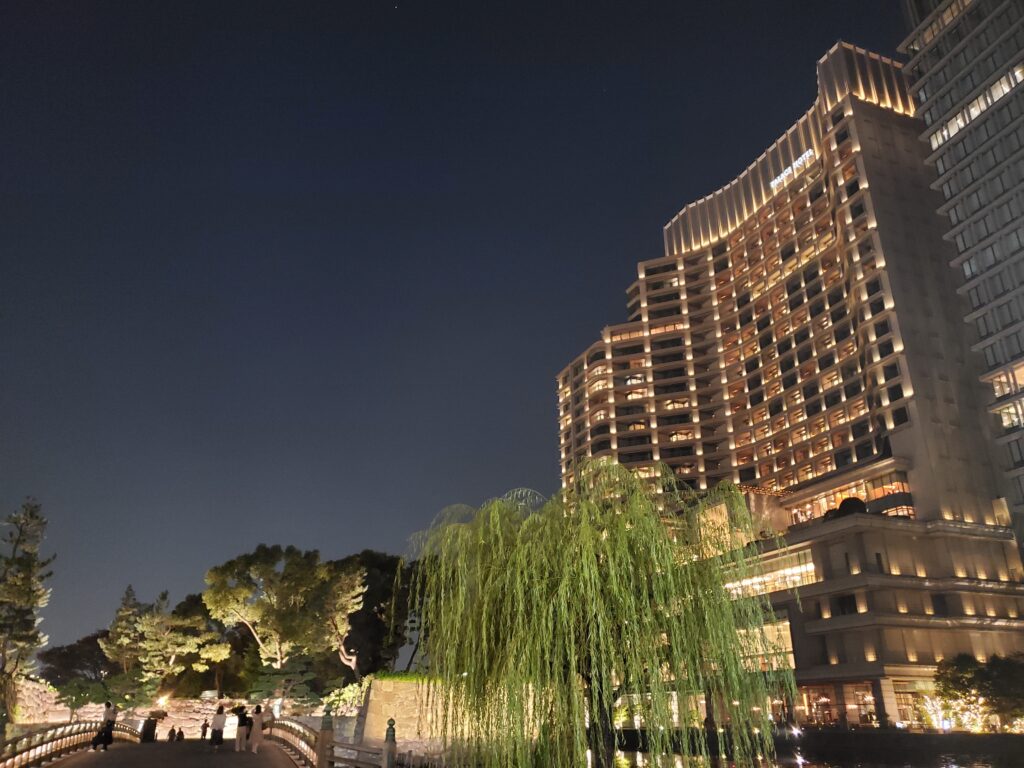
That night, my final destination was Wadakura Fountain Park.
The illuminated fountains cast light on the swaying willow branches, painting a dreamlike scene of shadows and reflections in water and greenery.
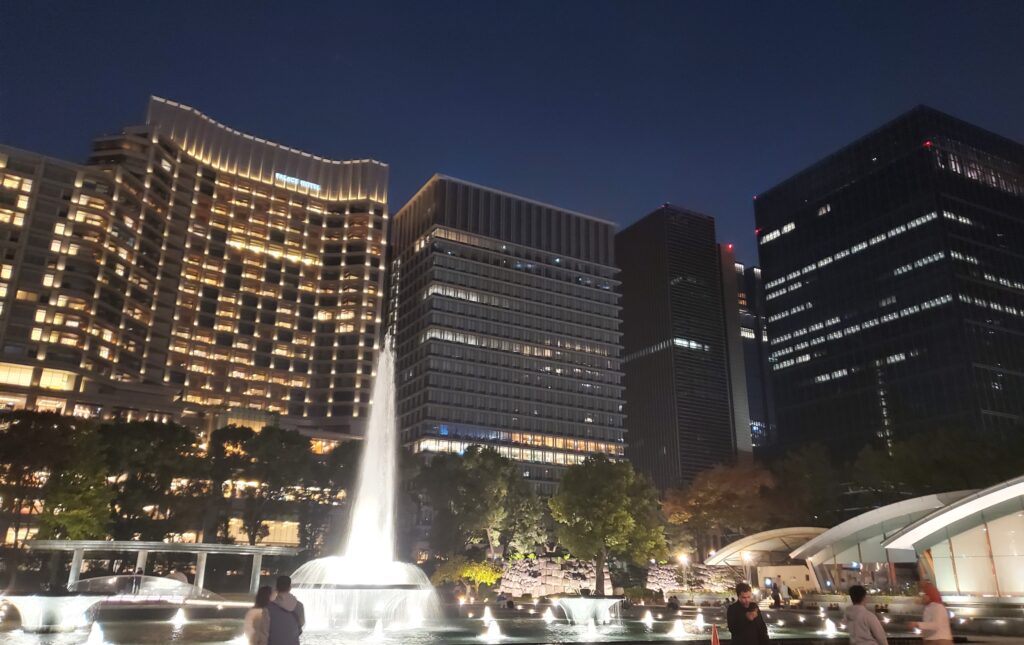
The light shimmered across the surface of the water, and if I listened closely, the sound of the fountains was the only thing that colored the night.
Around me stood the dignified buildings of classic hotels and high-rises whose glass walls mirrored soft lights—revealing a modern yet understated beauty unique to Tokyo.
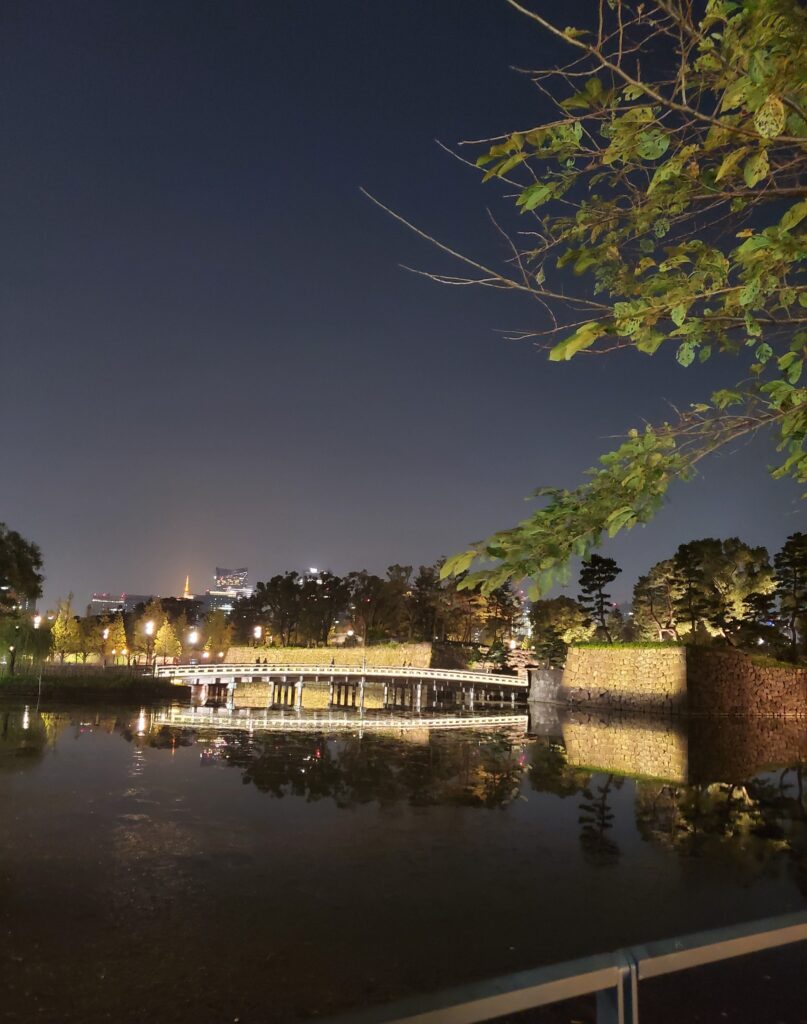
In that stillness, a quiet realization dawned on me.
The Imperial Palace is not just a relic of history.
It is something like “time” itself—present and unchanging—amid the ever-shifting currents of Tokyo.
It’s a place where people pause, reflect, and begin again.
And for me, a resident of Japan, it was beginning to hold a quiet, profound meaning.
Through this one day, I discovered a new way of seeing.
To live in a city is not simply to be swept along by its speed.
If we can attune ourselves to the “invisible time” flowing beneath its surface, we can find more space in our own lives.
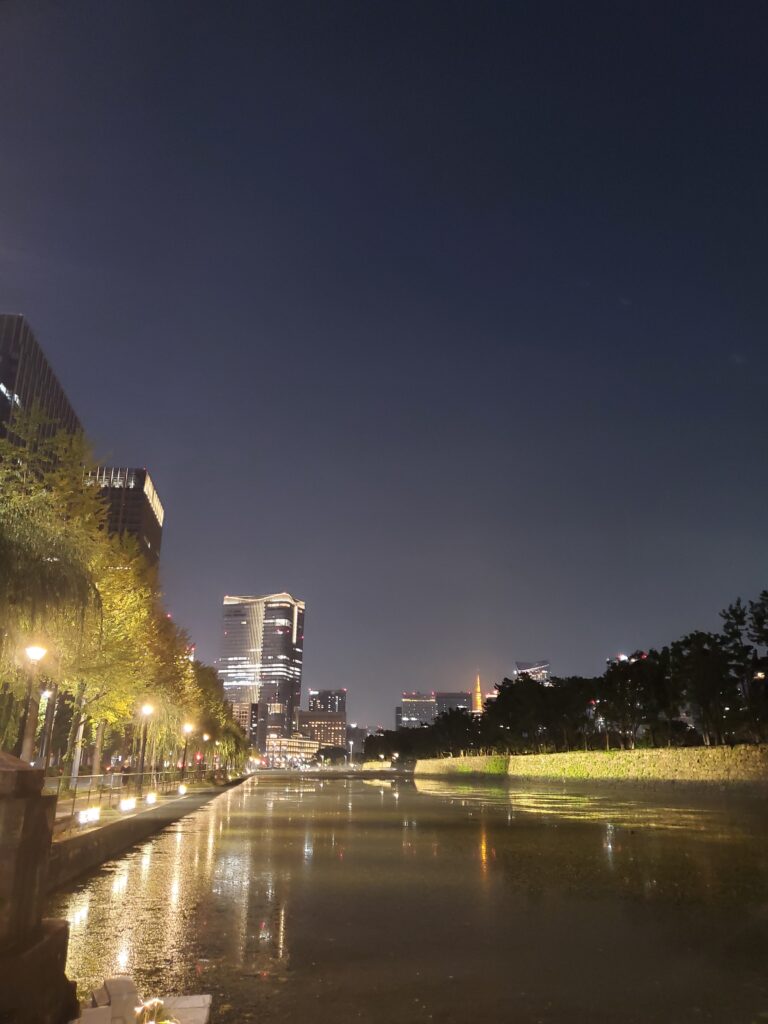
In this foreign land, in a place shaped by long centuries, I felt—for the first time in a long while—a quiet outline of myself coming back into view.
Something New Travel

